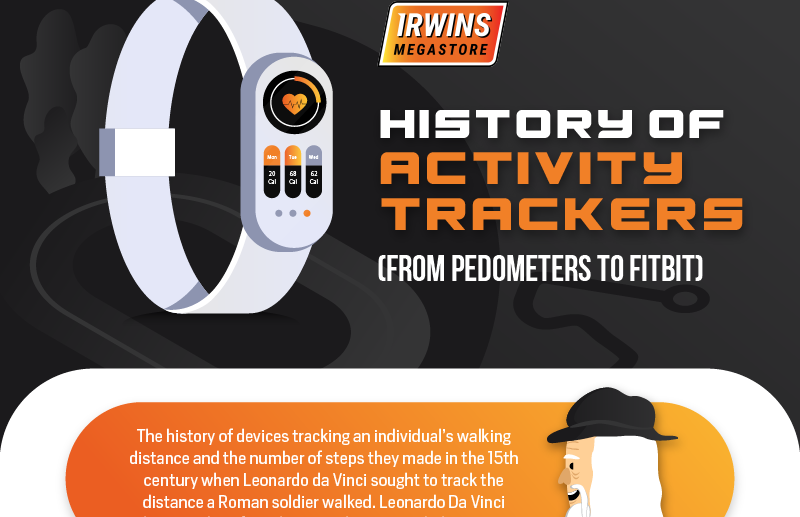
Activity trackers have come a long way since the use of pedometer technology. The advances of wearable everyday fitness and health technology have made it possible for people to track and monitor not only their steps but also their heart rate, oxygen intake percentages, and quality of sleep. In addition, today’s wearables have evolved into smart accessories, providing individuals with more comfortable and stylish health trackers.
While the usage of activity trackers increased and became more popular in 2015 because of the release of smartwatches Waterford with fitness tracking features, like Fitbit, many health and fitness enthusiasts have already been using app-less wristbands and trackers in the past.
Though most people recognize that wearables today have used the concept of the pedometer technology, some do not realize that the pedometer progressed from other technological developments that date back to the 1700s. And these technologies were also implemented on the fitness tracker Cork released over the years.
In 1770, Horologist and inventor Abraham-Louis Perrelet created the first, albeit rudimentary, pedometer, which was later used and improved by American Founding Father Thomas Jefferson to produce his own mechanical pedometer.
In 1921, the polygraph, or most commonly known as the lie detector, was the first invented machine to have sensors that can measure galvanic skin response (GSR), pulse rate, and blood pressure. Such sensors are currently in use in multiple fitness trackers today.
In 1965, Dr. Yoshiro Hatano, a Japanese professor at the Kyushu University of Health and Welfare, invented the first modern pedometer, Manpo-kei, which translates to “10,000 steps meter”. It was designed to look like a simple gadget that is worn around the waist.
In 1971, Ford used accelerometers for commercial products of their vehicles. It is a device that measures the acceleration of a structure’s motion. During the 1970s, accelerometers were widely utilized during the Space Race and the development of guided missile technologies, particularly in calculating their test objects’ position, orientation, and velocity without external forces. Today, accelerometer technology is used in modern activity trackers to count steps.
In 1982, Polar launched its Sports Tester PE PE2000, considered the forefather of all activity trackers, including watches for athletes. The technology combines an electrocardiogram (ECG) and a radio chest strap, allowing users to monitor their heart rate. Consequently, two years after, they released the Sports Tester PE3000, which is the first watch that displays live biometric information on a screen.
In 1996, the Global Positioning System (GPS) technology was opened up for civilian usage, as it was first only made available for military use. GPS technology is being implemented on modern fitness trackers to map an individual’s exercise routine efficiently.
In 2006, Nokia released its Nokia 5500 Sport, which is considered the first consumer device to have a built-in accelerometer. The device records movement and allows people to track the number of steps they have taken, the distance they covered, their speed, and monitor the calories they have burned.
In 2007, hardware start-up Fitbit came up with the idea of using sensors in small wearable devices, which was the start of the era of modern activity trackers. The company’s co-founders James Park and Eric Friedman turned their idea into a business and has developed and launched Fitbit Waterford devices with exciting features.
For more information on the history of activity trackers, see this infographic from Irwin’s Megastore.















